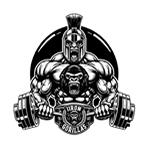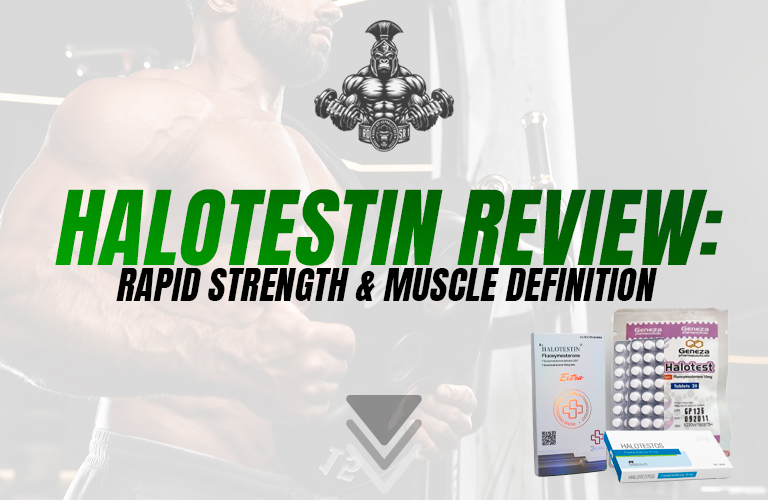
Halotestin, known as Fluoxymesterone, is a highly androgenic steroid famed for its exceptional ability to increase strength and muscle density. Due to its significant androgenic properties, it is especially favored during cutting cycles for its effectiveness in hardening and defining muscles, making it a popular choice pre-competition. Bodybuilders also value Halotestin for the aggressive edge it provides, enhancing focus and drive during intense training sessions or the day of competition.
However, its reputation is tempered by awareness of its potential for severe side effects, particularly hepatotoxicity, and its impact on cholesterol levels, making it a steroid approached with caution. Users typically reserve Halotestin for short-term use, maximizing its benefits while minimizing exposure to its risks. Despite these concerns, Halotestin’s ability to deliver rapid and visible results in terms of strength and muscle definition maintains its status as a potent tool in the bodybuilder’s arsenal, albeit one used judiciously within a well-structured training and supplement regimen.
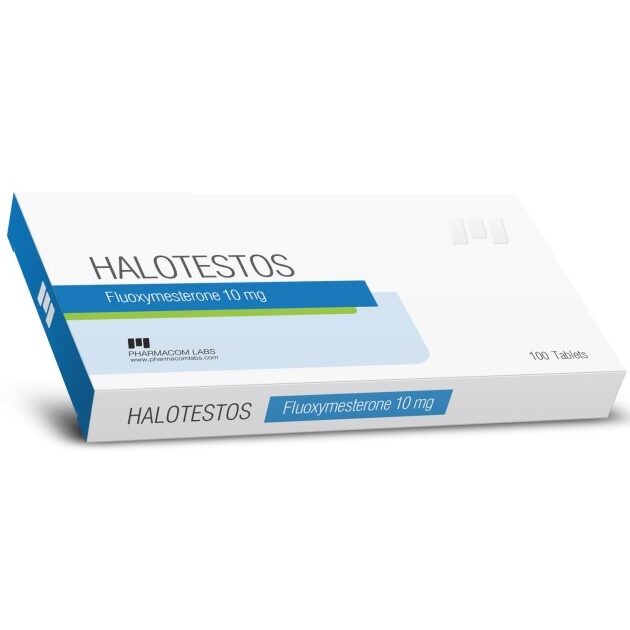
History of Halotestin (Fluoxymesterone)
Halotestin, known chemically as Fluoxymesterone, was first developed and introduced by Upjohn Pharmaceuticals in the 1950s. This potent anabolic androgenic steroid was primarily designed for medical use, to treat conditions like male hypogonadism, delayed puberty in boys, and in some cases, breast cancer in women. Its exceptional strength and ability to stimulate the production of red blood cells made it a valuable drug for treating anemia and muscle-wasting diseases as well. Unlike many other steroids developed during this period, Halotestin gained recognition for its strong androgenic properties with relatively less emphasis on muscle-building anabolic qualities. This distinction made it particularly useful in medical treatments where enhanced androgenic effects were desired without the extensive muscle growth associated with other steroids. Over time, its significant strength-boosting and muscle density-enhancing effects caught the attention of the bodybuilding and athletic communities. Despite its medical benefits, Halotestin’s use in competitive sports has been controversial, leading to its inclusion on many banned substances lists in professional sports. Some of its early medical uses include:
Treatment of Hypogonadism: Initially, Halotestin was used to treat male hypogonadism, a condition where the body doesn’t produce enough testosterone.
Breast Cancer Treatment: It was also prescribed as a treatment for certain forms of breast cancer in women, particularly those that are hormone-responsive.
Delayed Puberty in Boys: Halotestin found use in treating delayed puberty in boys, helping to stimulate the development of secondary sexual characteristics.
Usage in Strength Sports: Halotestin is known for its significant effects on strength and aggression, making it a choice steroid in strength-based sports like powerlifting and weightlifting. Its presence in these sports has often been a point of concern regarding fair competition.
Dosing Protocols of Halotestin (Fluoxymesterone)
Due to its potency and liver toxicity, Halotestin is used in low doses, typically ranging from 2.5mg to 10mg per day.
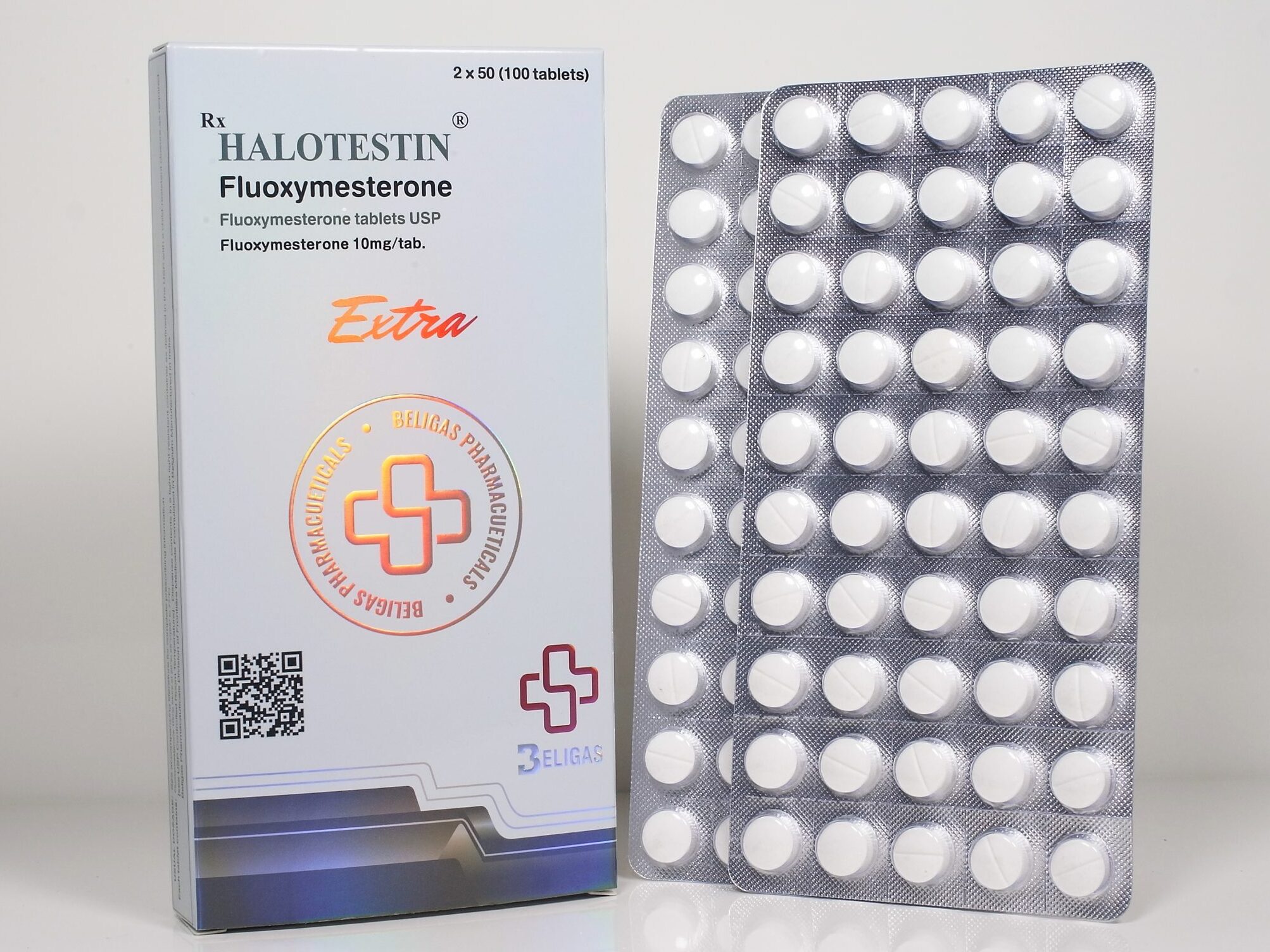
General Usage for Strength Athletes:
Common doses range from 2.5 mg up to, but rarely over, 10mg, typically taken an hour before a lift or meet to increase aggression and enhance performance.
Beginner Halotestin Cycle:
Duration: Weeks 1 – 2
Dosage: 5mg pre-workout
More Experienced Halotestin Cycle:
Duration: Weeks 1 – 2
Dosage: 10mg pre-workout
Female Use: Not recommended for female bodybuilders because of the high risk of virilization and other androgenic side effects.
Advanced Halotestin Cycle:
The dosage and cycle would be tailored to the specific sport the individual is competing in. For instance, a strength athlete might use Halotestin sporadically throughout a cycle of other steroids like Sustanon and NPP (Nandrolone Phenylpropionate). A fighter, on the other hand, may use Halotestin alone for a week leading up to a fight or even just hours before the fight.
Prolonged Cycling:
If used for a longer period, the most common protocol is a twoweek cycle followed by four weeks off due to its aggressive nature and potential liver toxicity.
Usage in Bodybuilding: Halotestin (Fluoxymesterone)
Halotestin, known for its potent androgenic effects, is a unique steroid in the bodybuilding community. Here’s how it’s typically used:
Pre-Competition: Halotestin is predominantly used by bodybuilders during the final stages of contest preparation. Its ability to increase aggression and strength makes it favorable for short-term use before competitions.
Aggression and Performance: The increase in aggression can be beneficial for intensive training sessions leading up to a competition.
Muscle Density and Hardness: Contributes to a more defined and vascular physique, which is desirable on the bodybuilding stage.
Strength Gains: Known for significantly enhancing strength without adding much weight, which is ideal for bodybuilders looking to stay within a specific weight class.
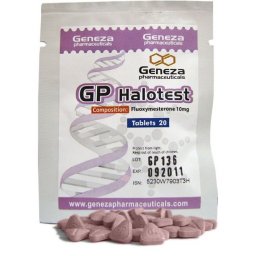
Stacking and Combinations
With Other Cutting Agents: Often stacked with other cutting steroids like Winstrol (Stanozolol) or Anavar (Oxandrolone) to enhance muscle hardness and definition.
Non-Aromatizing Steroids: Preferred to be combined with non-aromatizing steroids to avoid excessive water retention and maintain a lean appearance.
Health Precautions
Liver Protection: Using a clinically dosed liver support supplement like N2guard is critical.
Monitoring Side Effects: Close monitoring for any signs of excessive androgenic effects or liver stress.
Halotestin’s usage in bodybuilding is primarily focused on short-term pre-competition phases to enhance strength and improve muscle definition. Its potent nature necessitates careful dosing, duration control, and health precautions, especially considering its liver toxicity and androgenic effects.
Safety and Side Effects
Aggression and Mood Changes: Users may experience increased aggression and mood swings.
Liver Health: As a c17 alpha-alkylated oral steroid, Halotestin can be harsh on the liver, with potential damage occurring even at doses as low as 2.5mg per day.
Cardiovascular Health: Cardiovascular risks include negatively impacting cholesterol levels, increasing LDL (bad cholesterol), and decreasing HDL (good cholesterol).
Androgenic Effects: Due to its high androgenic activity, users with a predisposition to baldness or acne should be particularly cautious.
Estrogenic Effects: Though Halotestin does not aromatize, users should still be aware of potential estrogenic effects, especially when stacked with other aromatizing steroids.
Hormonal Disruption: Suppression of natural testosterone production, necessitating post-cycle therapy (PCT) for hormonal balance restoration.
Virilization in Women: Strong androgenic properties make Halotestin particularly risky for female users, with a high chance of developing masculine characteristics.
Dose-Dependent Effects: The severity and type of side effects can be highly dependent on the dosage and duration of use.
Individual Susceptibility: There is considerable variability in how different users tolerate Halotestin, with some experiencing severe side effects and others showing a higher tolerance.
Regulatory Actions
Halotestin, like other anabolic steroids, is banned by major sports organizations, including the International Olympic Committee (IOC) and the World Anti-Doping Agency (WADA). The regulation around Halotestin is strict due to its strong androgenic properties.
While Halotestin may not have the same level of notoriety as some other steroids in sports doping scandals, it is part of the broader issue of anabolic steroid use in sports. Its potent effects, particularly in terms of increasing strength and aggression, make it a substance of interest in the context of performance enhancement and the ethical considerations surrounding it.
“Bionic SARMs”: Your Ultimate Guide.
Download Now!
This will close in 120 seconds
Underground Oral Steroid Handbook
Download Now!
This will close in 120 seconds
Underground Injectable Steroids Handbook
Download Now!
This will close in 120 seconds
Underground Peptides Handbook
Download Now!
This will close in 120 seconds
Secret to Mail Order Steroids 2024 Handbook
Download Now!
This will close in 120 seconds
Underground Steroid Cycles Handbook
Download Now!
This will close in 120 seconds
Beligas Pharmaceuticals 2024 Underground Guide
Download Now!
This will close in 0 seconds
The Nootropics Underground Handbook
Download Now!
This will close in 120 seconds
EUROPHARMA 2024 Steroid Handbook
Download Now!
This will close in 120 seconds
Para Pharma 2024 Steroid Guide
Download Now!
This will close in 120 seconds
Fitness and Performance Blueprint
Download Now!
This will close in 120 seconds
Geneza Pharmaceuticals Underground Steroid Catalog
Download Now!
This will close in 120 seconds
Lean Body Manual
Download Now!
This will close in 120 seconds
SARMs.co Research Guide
Download Now!
This will close in 120 seconds
Australian Labs Underground Guide 2025
Download Now!
This will close in 120 seconds
SOCIAL MUSCLE eBook
Download Now!
This will close in 120 seconds
SOCIAL MUSCLE FREE EBOOK DOWNLOAD
Secure your copy now — link will be delivered by email.
This will close in 120 seconds
